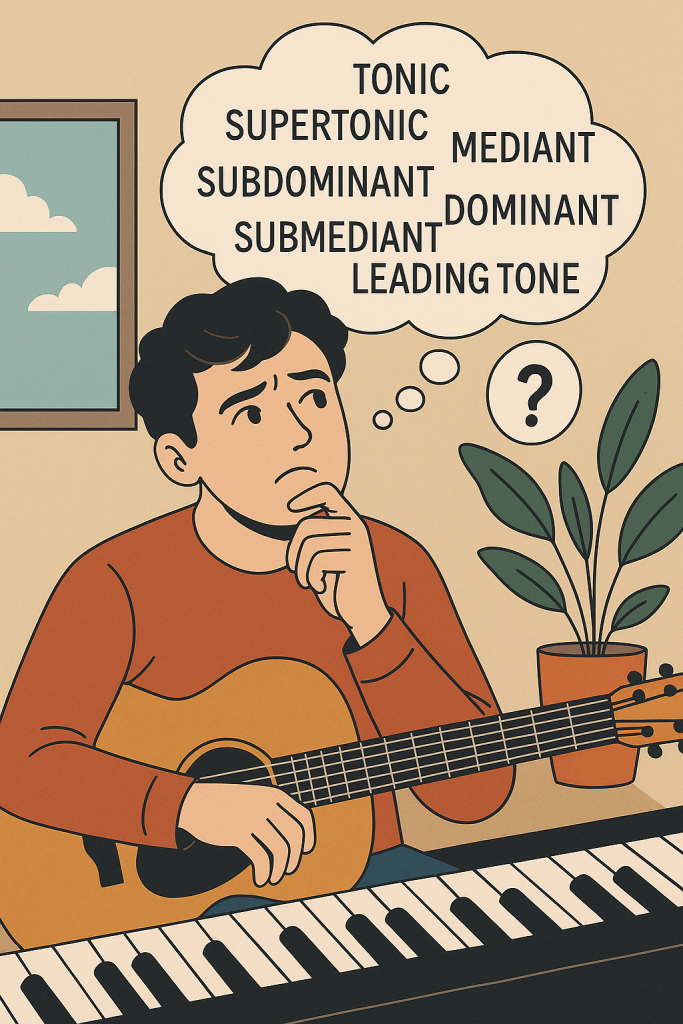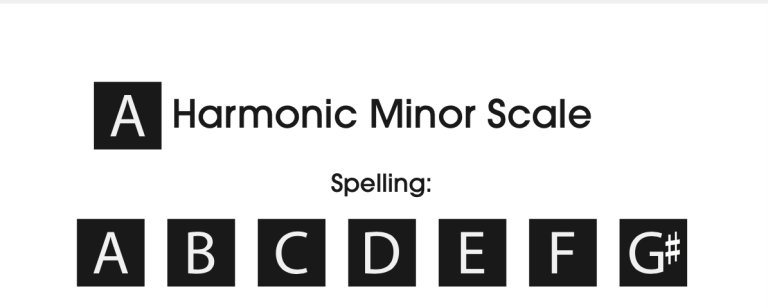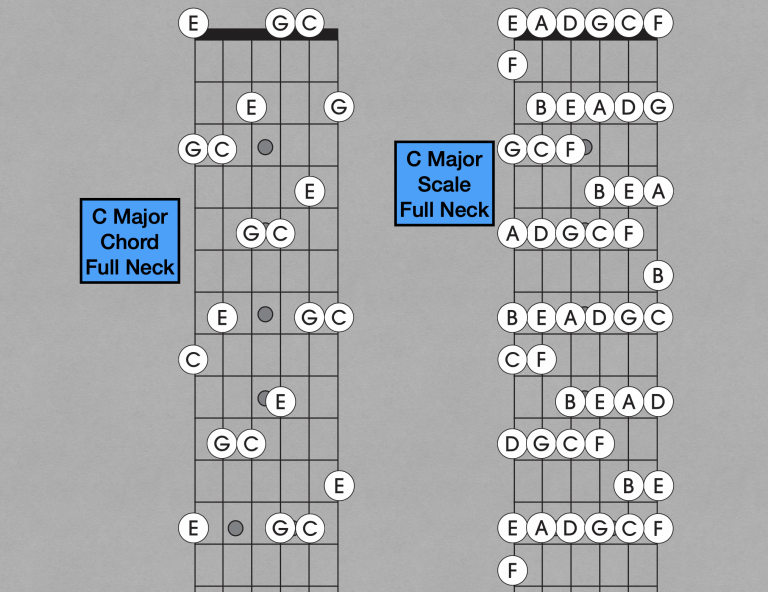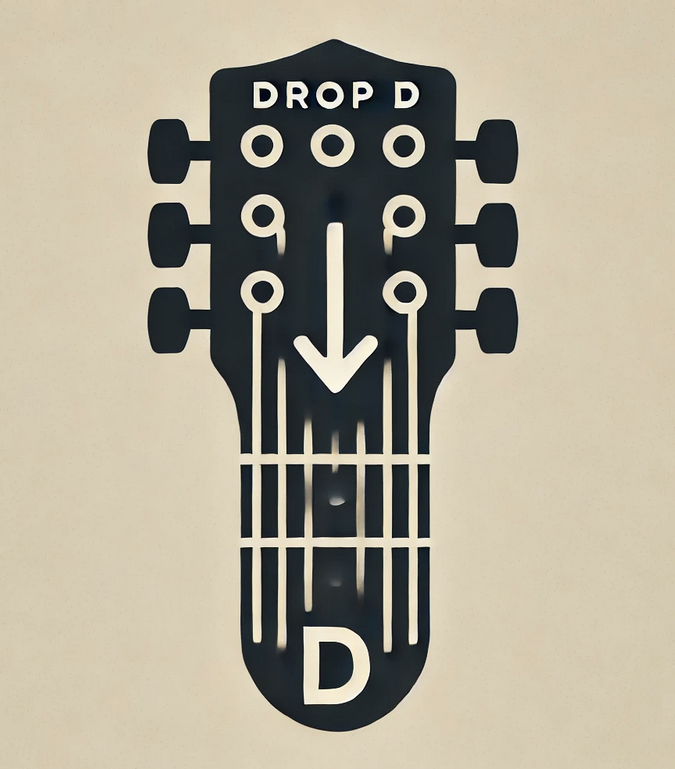Scale Degree Functions
Understanding Scale Degree Functions Through Real-Life Metaphors
Tonic Is Home: Making Music Theory Stick
If you’ve ever struggled to make sense of terms like Tonic, Dominant, or Submediant, you’re not alone. These are traditional labels for the scale degree functions in the major scale, but they can feel abstract without a framework.
One helpful way to internalize them is by using metaphor. In this article, we’ll break down each of the seven scale degrees and relate them to places you might visit in daily life — starting with the idea that the tonic is home.
🎶 Real-Life Metaphors for Scale Degree Functions
| Degree | Name | Function Summary | Metaphorical Location |
|---|---|---|---|
| 1 | Tonic | The tonal center; where everything begins and ends | Home |
| 2 | Supertonic | Often leads to the dominant; a step on the way | Grocery Store |
| 3 | Mediant | Between tonic and dominant; emotionally neutral | Café |
| 4 | Subdominant | Pushes away from tonic; often leads to dominant | School or Gym |
| 5 | Dominant | Full of tension; needs to resolve to tonic | Work |
| 6 | Submediant | Emotional detour; relative minor of tonic | Park |
| 7 | Leading Tone | Right before home; unstable and wants to resolve | Front Door |
Why Scale Degree Functions Matter
In tonal music, scale degrees aren’t just positions — they each have a function. Some pull the listener away from the tonal center; others bring them back. Understanding scale degree functions gives composers, improvisers, and students a clear map of how music creates motion and resolution.
The dominant (5) wants to go home — it’s like leaving work at the end of the day. The leading tone (7) is the front door — you’re right outside tonic. The submediant (6) feels like a reflective walk through the park. These metaphors illustrate how different degrees contribute emotional and structural roles within a key.
A Personal Metaphor (And Yours Might Be Different)
This location-based metaphor system — mapping scale degree functions to real-world places — is just one approach. You might come up with your own: a movie plot, characters in a story, or emotional stages.
What matters most is having something that helps you understand what each scale degree does. Whether you’re analyzing a chord progression or composing a melody, recognizing the function of each degree will improve your musical decisions.
Final Thoughts
The concept of scale degree functions helps musicians move beyond numbers and notes. It turns abstract theory into something expressive and memorable. By assigning familiar, real-world meanings to each degree, you’re more likely to remember how they interact — and how to use them.

by Henry Bahrou – Guitarist, Music Theorist, Music Academy Director






